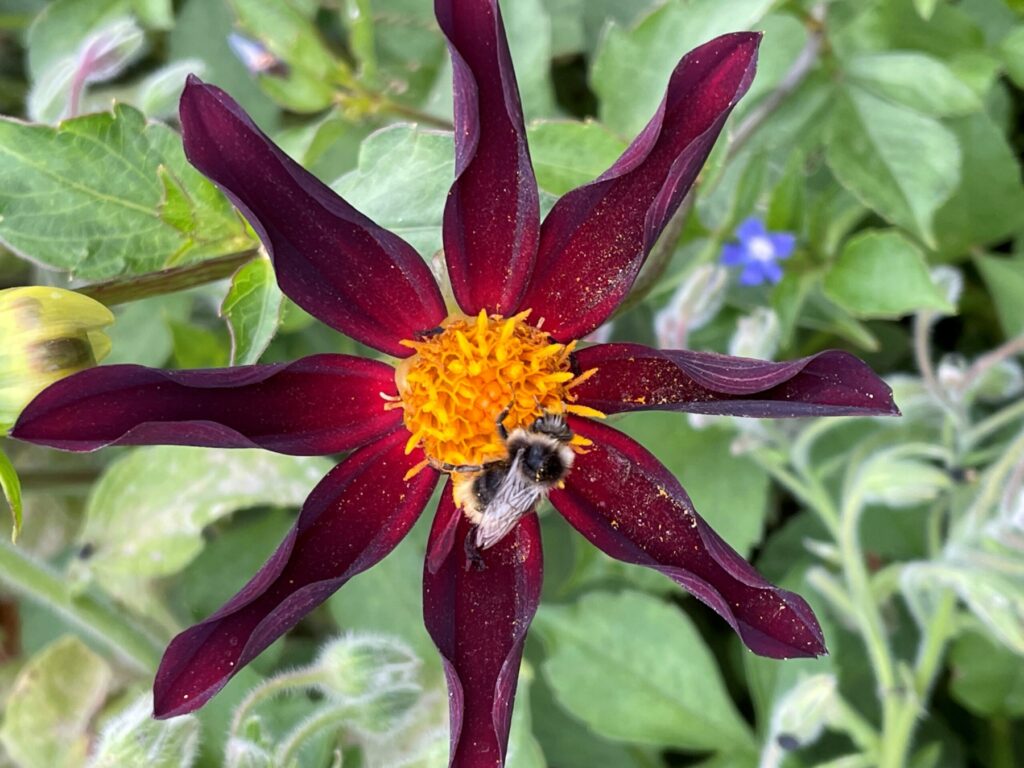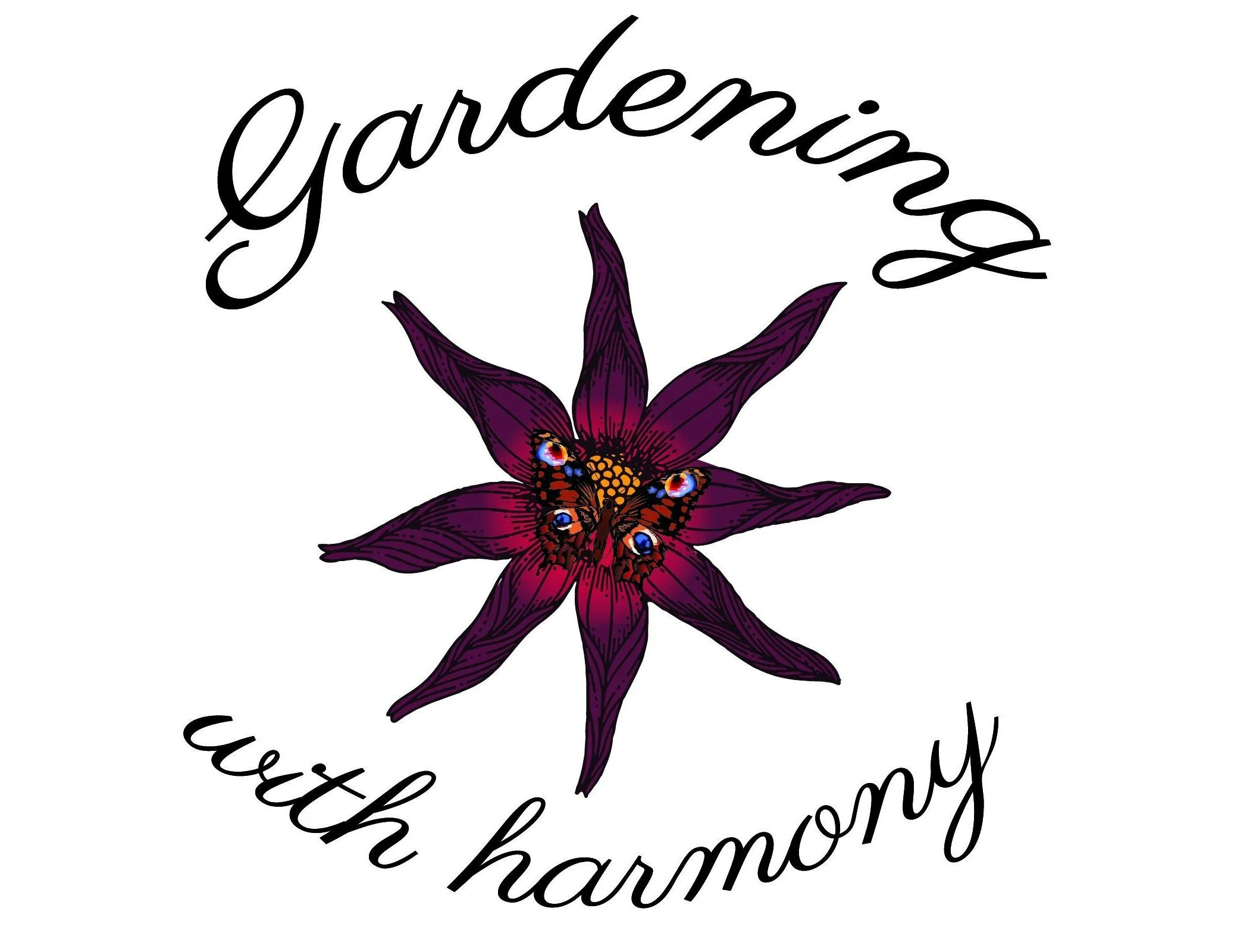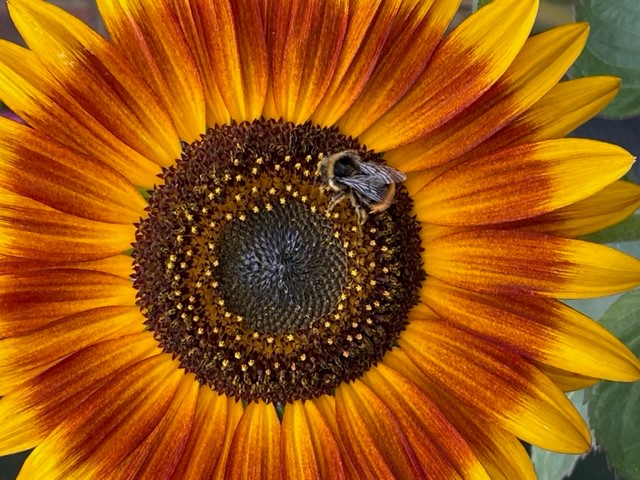
World Bee Day on 20th May
The UN have designated this date every year to raise awareness of the vital importance of pollinators. Also, the threats they face and their contribution as pollinators. So let us all help the beautiful bees.
I suggest we should all get involved for World Bee Day every year.
Whether you have a large garden, small garden, a courtyard, balcony, pots, or a window box, you can help the bees.
Importantly, sowing and planting bee-friendly flowers can help boost your local bee population. As a result, they then pollinate our flowers, our crops, vegetables, and fruit.
Overall, a fabulous partnership with benefits for us all.
Flowers for the beautiful bees

No matter what size area you have, you can do your bit for beautiful bees.
By planting a range of bee-friendly flowers for spring right through to winter.
The best habitats for bees are those that offer plenty of flowers to feed on.
In order to ensure that there is a good supply of nectar and pollen, we need flowers from March till October.
Pollen is needed when the queen bees are nesting early in the year. Also, when the nest is growing. And finally, later in the year when the new queens are fattening up ready for hibernation.
Flowers March till October

After a long winter, I so look forward to some flowers in my garden. Likewise, the bees are on the lookout for early flowers as well. Crocuses are an excellent choice, as are Iris Reticulata.
The first bees we usually see are the queen bumblebees. They emerge in spring to feed on early nectar and pollen before they hunt for a nest site.
When checking my garden every morning in early spring, I am always on the look out for the first sightings of a queen bee. Once I have seen a huge queen bee, I know that spring is on the way. A sight and thought to gladden the heart.
My post Sowing bee beautiful hardy annuals gives more information on flowers you can grow from spring onwards. One of these is borage. Borage is a must in my garden for its beauty but mainly as it is so beneficial for our pollinators who need all the help we can give them. This flower truly is a bee magnet.
Honka Dahlias, loved by beautiful bees

I absolutely adore dahlias, especially the honka varieties. More importantly, the bees love them as well. Flowering from July until first frosts, often late November, they are fabulously long flowering. Consequently, a superb supplier of nectar for the bees for months on end.
My post 10 beautiful dahlia flowers for pollinators gives details of the first of my top ten, chosen by the bees and other pollinators, in my garden this year.
This list of twelve may have some changes in 2023 as I have added several new pollinating dahlias to my garden. Cannot resist more dahlias, probably why I am known as the Dahlia Queen. Look out for a new post later in the year with my findings and photos of the bees in action.
A slice of bee heaven

Usually, I have some small flowers for pollinators next to Favolosa, my beautiful greenhouse. However, this year the cow parsley and comfrey has escaped from the bottom of the garden and landed here. Clearly, I did not remove last year’s batch in time!
As these flowers are so beneficial for bees, the plants get to stay there for now. The flowers are buzzing with bees all day long which is a fabulous sight. In the meantime, more small flowering plants are waiting in the greenhouse to take over this space later.
Cow parsley is important for a variety of insects, including bees and hoverflies, as it is an early source of pollen. Unfortunately, if allowed to set seed it will become a thug. I am primed and ready to remove them from this area once the flowers finish.
Similarly, the comfrey has spread around a little too much this year. Another fabulous plant for the bees though so most of it gets to stay for now.
Comfrey is an essential plant in my garden. Since it provides both pollen and nectar it is an absolute star plant to have for bees and other pollinators.
Additionally, comfrey is a fabulous plant for improving soil fertility, and as a feed for plants.
More flowers for the beautiful bees

The beautiful, fragrant lavender is fabulous for the beautiful bees. Photo above was taken in my garden in July.
My post Some beautiful lavender, 10 minutes gazing, 10 fantastic pollinators gives a snap shot of which pollinators visited my lavender.
Another fabulous choice is the cosmos. Primarily, because they can flower from June if not before, until first frosts in late November. Additionally, a beautiful flower to grow in your garden and pots for months of colour.
My post 8 benefits of beautiful cosmos flowers gives more details.

For more information
For more information on those beautiful bees and how to help, you could take a look at https://beefriendlytrust.org
Two books I refer to on a regular basis are below. I can thoroughly recommend both these books.
The Bee Garden: how to create or adapt a garden to nurture bees by Maureen Little. This is a delightful book, primarily Informative, but also amusing. Additionally, there are some beautiful photos. Packed with information about flowers and plants to help bees. https://amzn.to/45dSnfm
The Garden Jungle by Dave Goulson. This book is thought provoking and also inspiring. A great book for everyone who wants to encourage bees and other wildlife into our gardens. https://amzn.to/3pPjg9c
This blog is a participant in Amazon’s Associate’s Program. If you click on one of these links above, and make a purchase I may receive a commission, at no additional cost to you.
To finish and buzz off outside
To sum up, gardening is for everyone, so we should get everybody involved. Primarily, your family and your friends, but also neighbours and the wider community. Together, we can start growing a fantastic haven for the bees!
Additionally, the facts are well known that gardening can benefit the mind, body and soul and harnessing the power of gardening can improve our mental health and wellbeing.
In 2021, the RHS released research that revealed that people who garden every day have wellbeing scores 6.6% higher and stress levels 4.2% lower than people who don’t garden at all. Surveying more than 6000 people the research showed a significant association between gardening more frequently and improvements in wellbeing, perceived stress, and physical activity.
So, to conclude, we can grow a fantastic haven for ourselves as well!
I will continue packing in as many flowers for the bees as I can. Also, leaving an ever expanding area of long grass with sown wildflowers.
Additionally, I am looking into ensuring I have more bee hotels around the garden.
Do let me know what you are doing or will do to help the bees, wherever you are in the world. A photo would be great as well to share.
Thank you for helping the bees.
I took up the 30 Days Wild challenge in June and see below for my posts. I had a fabulous 30 days of wildness with the bees and other wildlife. Hope you enjoy them.
30 Days Wild. First week challenge
30 Days Wild, week two of the challenge
The fantastic wildness of magic week 3
Wild 30 days. The beautiful finale
To see all my updates as they happen, please enter your email address below and press the subscribe button.



2 responses to “Let’s all help the beautiful bees”
This is a well timed blog for me, I have a sizeable strip of dirt that needs colour and purpose. I now have homework to learn and gardening to plan.
Sounds great Andrew. Looking forward to seeing the colour and transformation, if you would like to share photo’s later. The bees will be thrilled.